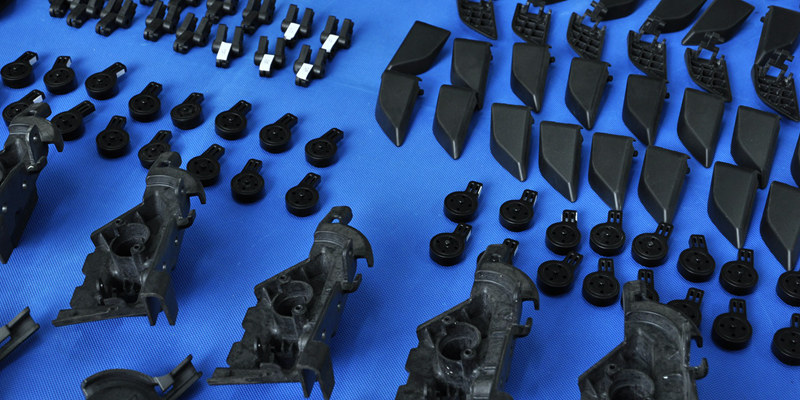- October 19, 2021
Nylon, you’ve probably seen it on the labels of some of the daily industrial plastic products or your tights or stockings. However, do you know where does it come from, what it is, and where and what it is often used, etc…Now, let’s talk about one of the most common engineering thermoplastic materials-Nylon.
What is Nylon?
Nylon material (or Polyamide) was the first synthetic fiber to appear in the world that was produced by the distinguished American scientist Carothers and a research team under his leadership. Carothers produced the Nylon 66 at that time, which is still one of the most common variants today. During World War II, there was a greater demand for Nylon compared to the supply of natural items such as silk, rubber, and latex.
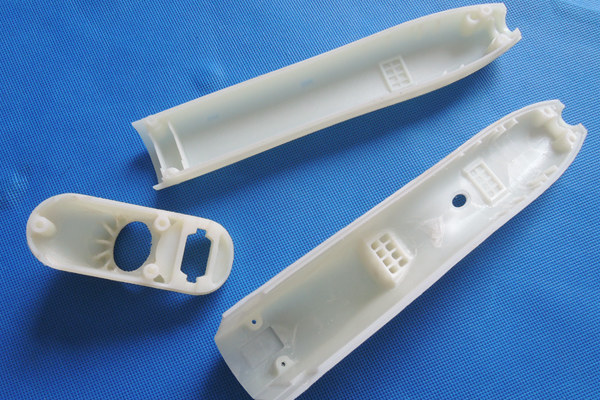
Nylon material is an engineering thermoplastic that is easy to machine and can serve as various mechanical end parts. Nowadays, it has been widely used in various applications, including apparel, the reinforcement material of rubber-like car tires, for use as a rope or thread, and for many injections molded parts for vehicles and machinery. Since it has higher impact strength, relative abrasion resistance, and long-lasting chemical features, better elasticity, it is often used to replace low strengthen metal parts in automobile engines. In addition, Nylon is also can be used as electrical insulation. It is light and provides high tensile strength and low friction. This kind of material usually melts and doesn’t easily burn.
What Are the Properties of Nylon (Polyamide) Material?
Property | Value |
Technical Name | Nylon ( PA ) |
Chemical formula ( Nylon-6 | [NH]-(CH2)5-CO]n |
Melt Temperature | 220°C(428°F)** |
Typical Injection Molding Temperature | 54-93°C(130-200°F)*** |
Heat Deflection Temperature ( HDT ) | 160°C(320°F) at 0.46Mpa (66PSI) ** |
Tensile Strengthen | 76MPa(16000 PSI) *** |
Flexural Strengthen | 110MPa(16000 PSI) *** |
Specific Gravity | 1.13 |
Shrink Rate | 1.3-1.7%(0.13-0.17 in/in) *** |
Different Types of Nylon Material Introduction
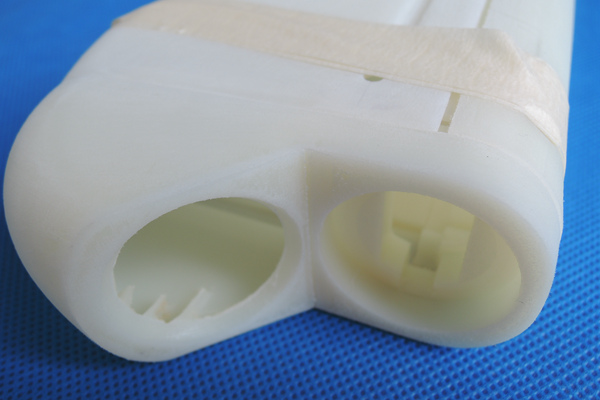
There are many different types of Nylon materials, some of which mainly including PA6, PA66, PA610, PA11, PA12, PA1010, PA612, PA46, PA6T, PA9T, and MXD-6 aromatic amide, etc. Among them, PA6, PA66, PA610, PA11, PA12 are the most widely used. However, let’s start with those as bellows:
Nylon 6
Nylon 6 is a semi-crystalline polyamide developed by Paul Schlack.
Typical Properties: Tough, possessing high tensile strength, elasticity, and luster. They are also wrinkle-proof and highly wear-resistant and chemical resistant like alkalis and acids. Its glass transition temperature is 47 °C.
Application: Nylon 6 filaments are a kind of highly elastic fibers that are typically applied in high-strength industry and textiles, including industrial cords, ropes, and clothing. It usually produces more reliable final part dimensions.
Nylon 66
Nylon 66 is another type of nylon or polyamide.
Typical properties: Highly fatigue-resistant and rigidity, better heat resistance, low friction coefficient, excellent abrasion-resistant, but has a greater degree of moisture-absorption and insufficient dimension stability.
Application: Bearing medium load, work temperature under <100-120 °C, without lubrication or less lubrication, as wear-resistant stressed transmission parts. Nylon 66 is also great for is injection molding.
Nylon 12
It is also known as PA12 with the formula [(CH2)11C(O)NH]n. It is also a good thermoplastic with broad additive applications.
Typical properties: Tough, impact strength, tensile strength, and excellent flexibility.
Application: With those excellent mechanical properties, Nylon 12 (PA 12) has been liked by injection molders. Meanwhile, it is also becoming the one of most common materials in the additive manufacturing processes for producing functional parts and prototypes.
Nylon 610
It is a kind of engineering resin that offers properties between those of nylon 6 and nylon 12.
Typical properties: Its toughness, rigidity, and heat- resistance are lower than nylon 66, but with lower moisture-absorption, better wear-resistant,excellent UV and chemical resistance, excellent resistance to zinc-chloride solutions.
Application: It is similar to Nylon, the perfect material for gears requiring high precision and Parts with high humidity variations in working conditions. Nylon 610 can be used for injection molding and extruded.
Nylon1010
It is also known as PA 10/10, an unreinforced, plasticized, and heat stabilized, renewably sourced, biobased polyamide 1010 resin developed for extrusion.
Typical properties: It’s has better abrasion resistance, low density, high resistance to chemicals and weathering, results in good dimensional stability, and easy to machine. Its toughness, rigidity is lower than Nylon 66, moisture- absorption is lower than Nylon 610, a great organic alternative to PA12.
Application: It can be used as the workpiece when the Nylon 610 is under the condition of light load, appropriate temperature, humidity easily changes, etc.
Pros and Cons of Nylon (Polyamide) Material
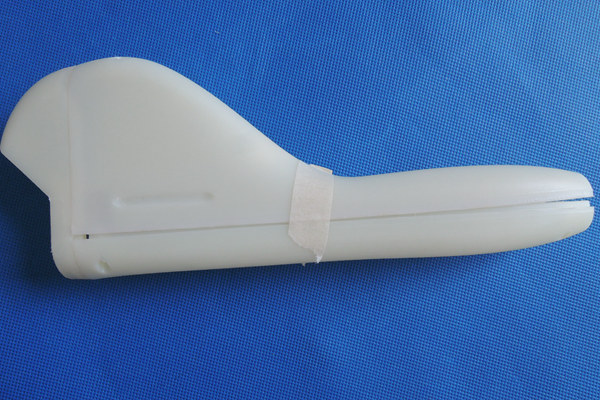
Nylon (PA) material has diverse advantages that can make it an ideal mechanical material for a wide range of applications. You’ll find the key pros and cons of the material listed below.
Pros of Nylon (PA)
- High mechanical stability, excellent ductility, strong tensile strengthen. Nylon’s tensile strength is higher than that of metals, and compressive strength is comparable to that of metals, but it is not as rigid as metals. When it comes to the tensile strength, nylon itself is close to the yield strength and is three times as high as ABS material. Due to the powerful absorption capacity for shock and vibration, the impact strength of nylon is much higher in comparison to general plastics, as well as is better than that of acetal resins.
- Excellent fatigue-resistant. The parts made by Nylon can still keep the original mechanical strengthen properties after alternative bending. The PA is often can be applied to occasions where periodic fatigue is highly visible, including escalator handrails, and plastic rims of new bikes, etc.
- The high softening point, heat-resistant. Take PA46 as an example, the thermal deformation mechanism of high crystalline nylon is high, which can be used at 150 °C for a long time. The thermal deformation of PA66 can reach above 250 °C after glass fiber is reinforced.
- Smooth surface, abrasion resistance. The mechanical structure parts made by nylon are self-lubricity and can reduce noise; if it is necessary to use a lubricant to reduce friction or help heat dissipation, water oil, grease, etc. can be chosen. Thus, the transmission parts have a long working life.
- Corrosion-resistant, very resistant to alkali and most salt liquids, also resistant to weak acids, motor oil, gasoline, aromatic compounds. It can be used as the packaging material for lubricants, fuels, etc.
- Self-extinguishing, odorless, non-toxic, weather-resistant, immune to biological erosion, good antibacterial, anti-mold ability.
- Excellent electricity property. Since nylon has high volume resistivity, it won’t be easily broken down through high voltage. In the dry environment, it can be used as an industrial frequency insulation material; in the high humidity situation, it still keeps better electrical insulation.
- Light-weight, easy to dye, and form. It has low melt viscosity and can flow quickly. It’s easy to injection molding with the high freezing point and quickly forms so that leads to a short forming period and high productivity.
Cons of Nylon (PA)
- Easily water absorption. This kind of property influences the dimension stability and electricity of the parts may easily cause the mechanical strengthen. The reinforcing fiber can reduce the water absorption of the resins so that it can work under the high temperature and humidity environment. There is a good affinity between Nylon and glass fiber. It is often used for combs, toothbrushes, coat hooks, fan bones, net bag cords, fruit outer packaging bags, etc. It is non-toxic, but cannot contact with acid and alkali for the long term. It’s worth noting that the tensile strength of nylon can be increased by about twice, and the temperature resistance can be improved accordingly after adding the fiber.
- Poor light resistance. It will be easily oxidized with the air, turns to be brown, and break out under the high temperature for a long time.
- Injection molding is more stringent: the presence of trace moisture can harm the quality of molding because the thermal expansion leads to product dimensional stability is difficult to control; the presence of a sharp edge in the mechanical products may cause mechanical strengthen; the uneven wall thicknesses will cause the mechanical parts to twist and become deformed; it has high requirements for the machining equipment.
- It absorbs water; not easy to resist strong acids & oxidant; cannot be used as acid-resistant materials.
Common Uses & Applications of Nylon
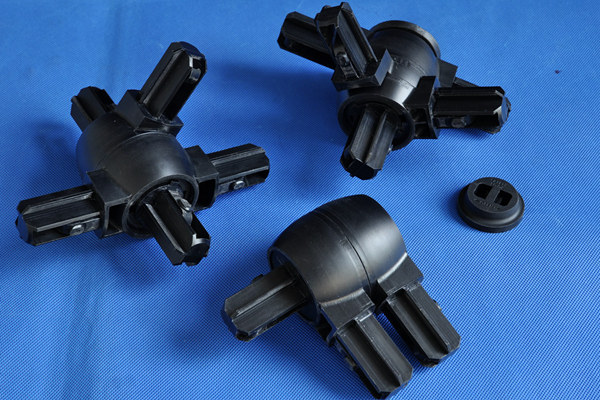
Nylon material is characterized by four main types of polyamide nylon: nylon 66, 11, 12, and 46. Generally, those names derive from the length of their polymeric chains. There some typical applications include:
Automotive Industry – oil reservoir, cylinder head, radiator, oil & water tank, water pump impeller, wheel cover, outer panel, handle, gear, bearing, shank, outer plate, binding post, etc
Electronic Industry – Housings, plug-ins, binding post, connectors
Medical Industry – Implants, catheter shafts, and balloon tubing, etc
Music Industry – Guitar strings and pics
Daily uses – various gears, toothbrushes, including fishing line & fishnet, tennis racket strings, gears, tents, carpets, etc
Clothing – Shirts, foundation garments, lingerie, raincoats, underwear, swimwear, and cycle wear.
Choose the Right Nylon for Prototype Development
From the above, we understand some of the properties of nylon. Then, let’s discuss how to use Nylon materials for prototype development on CNC Machines, 3D Printers, & Injection Molding Machines. As we know, Nylon can be easily melted into sheet stock (great useful for CNC machining), filaments (great useful 3D printing), films (great useful for packaging), and fibers (useful for fabrics). It is also a perfect candidate for injection molding material.
CNC Machining
At WayKen, we usually produce prototype nylon parts by CNC machine for the customers. In the past project experience, we once made plastic hook prototypes for use with the cords. We will help our customers to confirm the size/structure/shape/appearance/aesthetics/function from ABS FDM prototype. The hook in nylon was machined by our CNC machine to test the strength. Then, we use injection molding as the final step to produce the parts.
3D Printing
Natural Nylon raw materials are generally off-white, but also available in black and white. In another word, Nylon can be dyed into any color. This material is easily available in the form of filaments which can be used for 3D printing. On the 3D printers, it is heated and the melted filament is manufactured into the desire 3D shapes.
Injection Molding
To increase its tensile strength, Nylon is sometimes filled with a percentage of glass fibers (glass usually occupies 10% and 40%) during the injection molding process. With injection molding, the hooks are over 40%. Although the glass fibers do increase strength to some degrees, they also impact the way a part fails. The Nylon usually will bend and yield before it breaks without any glass filling. With the high percentage of the glass fibers, the failure becomes an instantaneous brittle break with minimal bending. When Nylon has a glass fiberfill, it will have some special labels, for example, 30% GF Nylon (GF stands for “glass filled “).

